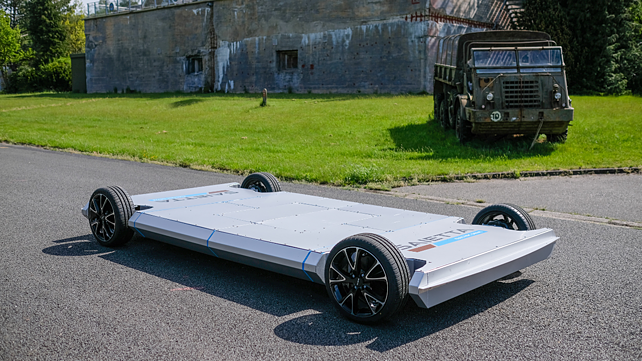
Saietta Group, an established engineering company based in Oxfordshire, England and specialises in propulsion motors for a broad range of electric vehicles (EVs), has demonstrated its AFT 140 electric motor’s in-wheel variants for lightweight EVs operating in city centres around the world.
Moving the powertrain entirely into the wheels creates a perfectly flat floor with minimal intrusion into the rectangular platform. This maximises the usable space above the chassis for the vehicle’s primary purpose, such as transporting people or cargo, selling products in a mobile shop, or collecting refuse.
According to the company, in-wheel motors also reduce parts and drivetrain complexity, offering a lightweight and cost-efficient solution to vehicle electrification, eliminating heavy, intricate and expensive components often found in other electric drive systems.
The objective to develop electric motor’s in-wheel variant is to cater to mega-cities globally that are doing away with ICE vehicles and look forward to alternate solutions.
The company believes that these platforms can be cost-effectively mated to multiple ‘hats’ for vehicles acting as people carriers, last-mile e-commerce delivery, mobile shops, refuse collection and inner-city autonomous pods.
Smart mobility platform manufacturers typically position the motors outboard but not in-wheel. The circular ‘pancake’ shape of Saietta’s AFT motors is suitably placed in-wheel entirely. Besides, the motors have also been engineered to deliver the power and torque required at low voltage, making them a significantly safer solution than high voltage alternatives.
Typically, these types of urban mobility applications travel at low speeds in stop-start inner-city traffic. Saietta’s lightweight and compact AFT electric motors are a good match when placed in-wheel for this relatively undemanding congested city centre usage. The AFT 140 motors have also been designed to deliver high efficiency on urban journeys meaning vehicles go further on a single charge.
The technology is also effective at regenerative braking, which puts energy back into the battery pack, thereby extending the range on a single charge.
Wicher Kist, Chief Executive Officer, Saietta Group, said the company is not intending to become a platform manufacturer and only developed a chassis to demonstrate the power of its in-wheel motor innovation. It will work with platform developers, complementing rather than competing with their innovation. “Ultimately, we believe that inner-city electric vehicles will be fully autonomous, and our in-wheel motor technology can play an important role in this market,” he added.